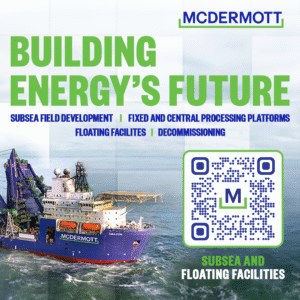You can have the best crew, a tight schedule, and a client who pays on time and still lose margin to a problem you can’t see. The hidden risk? Privately owned utilities snaking under parking lots, campuses, factories, and mixed-use sites. They don’t show up on public maps. One careless bucket tooth or saw cut and you’re paying for repairs, delays, and bruised trust.
This article gives entrepreneurs a practical, numbers-first way to close that gap. You’ll learn what “private locates” actually cover, how to model their ROI, and a simple playbook to turn invisible infrastructure into predictable outcomes.
The Blind Spot That Eats Margin
Public 811 locate requests are a great start, but they mainly mark utilities that the public owners maintain curb-to-curb. On private property, responsibility often shifts. That’s where the blind spot lives:
- power from the main to a warehouse subpanel,
- telecom loops feeding tenant spaces,
- private water or fire lines between buildings,
- gas to rooftop units, generators, or outbuildings,
- abandoned lines that no one decommissioned on paper.
These assets are real, energized, and unmapped in most public systems. When they’re missed, the consequences land on your balance sheet, not the city’s. A single strike can trigger emergency response fees, specialized repairs, premium labor rates, schedule slips, liquidated damages, and awkward calls with insurers. Even if you dodge a full outage, you still absorb crew stand-by, re-mobilization, and lost goodwill.
Entrepreneurs feel this most in tight-margin projects and fast-turn programs—tenant improvements, light industrial, retail rollouts, EV charger installs, and site refreshes where “just a few saw cuts” can intersect with unknown lines.
The Business Case: Model the ROI Before You Dig
Treat private utility locating like an insurance-plus-efficiency investment. You’re not only avoiding a catastrophe; you’re buying back certainty that stabilizes schedule, reduces claims, and protects brand equity.
Here’s a simple framework:
1) Define the cost of a private locate.
Scope drives price: records review, EM (electromagnetic) locating, ground-penetrating radar (GPR), and, at conflict points, vacuum-excavated test holes (“daylighting”). For planning, assume a fixed mobilization plus a unit cost per area or linear foot. The exact numbers vary by market and complexity; what matters is consistency in how you estimate.
2) Estimate your expected loss without a locate.
- Probability of a strike on this site or program (low/medium/high).
- Consequence if it happens: direct repair + delay days × overhead/day + potential penalties.
- Expected loss = probability × consequence.
3) Add schedule protection and redesign savings.
- How many RFIs, design tweaks, or re-routes will you avoid by knowing where conflicts are before you mobilize?
- Every avoided RFI/change order has a cost and time value. Add them.
4) Calculate ROI.
- ROI % = (Total Benefits − Locate Cost) ÷ Locate Cost × 100
- Payback is often immediate inside the same project phase because a single avoided strike covers the spend.
Worked example (plug numbers to fit your world):
- Private locate package: $22,000 for a distribution center yard and building interior.
- Expected strike consequence: $120,000 (repair, standby, two-day slip, weekend premium).
- Probability without a private locate: 20% (based on similar sites and past incidents).
- Expected loss: 0.2 × $120,000 = $24,000.
- Add schedule/design savings from known conflicts: $15,000 (fewer RFIs, no re-mobilization).
- Total benefits = $39,000.
- ROI ≈ (39,000 − 22,000) ÷ 22,000 = 77%, payback inside the phase.
Two notes:
- Even if your probability is lower (say 10%), the math still supports the investment on most sites.
- For program work (repeat sites, franchised locations), the benefits compound because your team stops “learning the hard way” at each address.
What a “Right-Sized” Private Locate Looks Like
You don’t have to gold-plate the scope. Match effort to risk:
Tier 1: Records + Recon
- Gather existing as-builts, landlord/owner records, and any campus maps.
- Walk the site with operations staff. Look for transformer pads, pedestals, valve covers, tracer wires, and “odd” patchwork in pavement—physical tells of buried lines.
Tier 2: EM + GPR Sweep (Design-grade intelligence)
- Use electromagnetic locating to trace conductive lines and marked tracer wires.
- Use GPR to detect non-conductive utilities (plastic water, some telecom) and unknowns.
- Capture data with GPS/RTK so it drops straight into CAD/GIS.
- Deliverables: georeferenced map layers, plan sheets with depths/accuracy notes, and a conflict report for your planned excavation and saw-cut paths.
Tier 3: Daylighting at Critical Crossings (Construction-ready certainty)
- Vacuum-excavate small test holes at high-consequence intersections—where your trench crosses a suspected fiber/gas/power line or where depth clearance is tight.
- Survey and photograph each daylighted point; update your drawings before you cut or trench.
Vendor selection tip. Don’t buy on hourly rates alone. Score vendors on accuracy statements, sample deliverables, turnaround SLAs, safety record, and digital hand-offs (CAD/GIS/BIM-ready). If you operate in Texas, a simple search for utility location Houston will surface providers who understand Gulf Coast soils and dense urban corridors, helping you shortlist specialists with the right regional experience.
Closing the Gap on Privately Owned Utilities: A Step-by-Step Playbook
This is how entrepreneurs turn locating from a one-off cost into a repeatable profit protector.
1) Bake private locates into the schedule
Add a milestone before saw cutting, trenching, or setting foundations. Pair it with your 811 ticket so you layer public and private information rather than waiting for a surprise in the field.
2) Tie scope to real decisions
Ask, “What will we do differently with better data?” If the answer is “change the trench path by 2 feet” or “shift the saw cut,” you’ve identified the exact benefit. Capture it.
3) Set clear deliverables
- Georeferenced layers (not just PDFs).
- Utility type, quality level/accuracy class, depth notes, and confidence ratings.
- A conflict matrix that lists every planned excavation segment and the nearest utility with offset/depth.
4) Daylight with discipline
Do not skip the critical test holes where consequence is high. The cost is small compared to a miss, and it validates GPR/EM interpretations.
5) Route findings into your plans and crews
- Update CAD, field prints, and staking files.
- Walk the map with your foreman.
- Put “no-go” zones on the daily huddle board.
- If you use tablets, push the latest layers to the field.
6) Track KPIs
- Strikes per 1,000 linear feet.
- Conflicts removed during design vs. discovered during construction.
- Days of schedule variance avoided.
- Claims avoided or reduced.
Tie each avoided issue back to the private locate work order. That’s your audit trail when you report ROI to partners, lenders, or insurers.
7) Close the loop post-project
Archive the final utility map in your GIS or document management system. The next build on that campus—your project or someone else’s—is faster and safer when the data persists.
Tech, Talent, and When to In-House
Entrepreneurs often ask whether to build a small locating capability in-house or outsource. A hybrid model works well:
- Outsource comprehensive sweeps and complex sites. Specialists bring multi-frequency GPR, EM tools, vacuum excavation, and seasoned interpreters.
- In-house the “first 10%” of reconnaissance: record gathering, site walks, and simple tracing for repeat program work. Even a modest kit (paint, flags, tape, documentation app) and a trained coordinator will elevate outcomes and reduce external spend by making scopes tighter.
- Own the data. Require open, portable formats and keep them versioned with your drawings. This transforms locating from a one-time expense into a growing asset that improves every subsequent project.
Training matters. Teach your PMs and superintendents to recognize utility tells, read locate marks, and escalate questions early. A two-hour toolbox talk can save a $20,000 Saturday repair.
Risk Financing, Reputation, and the Hidden Upside
Private locates bring benefits that don’t show up on a single invoice:
- Insurance posture. Fewer incidents mean a cleaner loss run at renewal and stronger negotiating power.
- Bid competitiveness. You can trim contingency when your unknowns become knowns—winning more work without squeezing your margin.
- Client trust. Owners notice when you plan, coordinate with utility stakeholders, and avoid outages for tenants. That reliability is a growth engine disguised as risk management.
If you manage multiple sites per year, the compounding effect is real. Your database of verified utilities reduces discovery time on every new address. Your crews develop instincts that avoid mistakes. Your schedules stop slipping for the same preventable reasons.
Quick Checklist You Can Use This Week
- Pull all available as-builts and campus utility diagrams.
- Submit the 811 ticket; schedule a private locate for on-site assets.
- Scope EM + GPR for the full work area; daylight at high-consequence crossings.
- Demand georeferenced CAD/GIS layers, not just paper maps.
- Update plans, stake offsets, and daily huddle boards with conflict zones.
- Track KPIs and tag avoided costs to the locate work order.
- Archive final layers in a central repository for the next project.
Bottom Line: Spend a Little to Save a Lot
Skipping private locates feels lean—until it isn’t. The math favors a disciplined, right-sized approach almost every time, especially where privately owned utilities are likely. For entrepreneurs, the win is bigger than avoiding a bad day: you stabilize schedules, de-risk cash flow, impress clients, and turn subterranean guesswork into a repeatable advantage.
Start with one pilot project. Scope a private locate, daylight the critical crossings, and track the outcomes. When you present the ROI with real numbers—fewer RFIs, zero strikes, on-time delivery—you won’t have to argue for the budget again. You’ll have proof that finding what you can’t see is one of the smartest investments you can make.
Article received via email






























